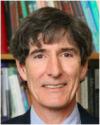| Online: | |
| Visits: | |
| Stories: |

| Story Views | |
| Now: | |
| Last Hour: | |
| Last 24 Hours: | |
| Total: | |
Fed Watch: Onto The Next Question
Tim Duy:
Onto The Next Question, by Tim Duy: It would seem that a December rate hike is all but certain barring some dramatic deterioration in financial conditions. The October employment report should remove any residual concerns among FOMC members over the underlying pace of activity, clearing the way for the Fed to make good on the strongly worded October FOMC statement. Given the resilience of recent trends, it is tough to see that even a weak-ish November employment report would dissuade the Fed from hiking rates. Quite frankly, regardless of whether you think they should hike rates, if they don't hike rates, the divergence between what they say and what they do would become truly untenable from a communications perspective.
Nonfarm payrolls jumped 271k in October, a relief after two weaker reports. Note though that the three-month moving average still indicates that job growth has lost some momentum:
That said, momentum remains sufficient to sustain ongoing improvement in a wide array of labor market indicators. Those pervasively identified by Federal Reserve Chair Janet Yellen:
Notably, wage growth accelerated, giving fresh hope that it has broken out of its multiyear doldrums. The Fed will see this as evidence that their estimates of the natural rate of unemployment are more right than wrong:
Another way to see that wage growth may be set to break higher:
If nominal wage growth were to break higher, would that reflect the impact of productivity gains, margin compression, or higher inflation? Your view on that question will influence your rate outlook.
With unemployment edging below the Fed's current estimate of the natural rate (note that we get updated forecasts in December) and wages showing signs of life, it seems that the Fed is positioned to move forward with a rate hike in December. This is especially if they want to make good on their promise to hike rates at a gradual pace. San Francisco Federal Reserve President John Williams reiterated that point last week. Via the Wall Street Journal:
“An earlier start to raising rates would also allow a smoother, more gradual process of policy normalization, giving us space to fine-tune our responses to any surprise changes in economic conditions,” Mr. Williams said. “If we were to wait too long to raise rates, the need to play catch-up wouldn’t leave much room for maneuver,” he said.
Note that the first hike and pace of tightening were never really separate as the Fed would like you to believe. Williams makes clear the the pace was in fact dependent on the timing of the first hike. The earlier they start, the more gradual the subsequent pace.
The question now arises, however, of what is “gradual”? The general consensus is the “gradual” means 25bp every other meeting. St. Louis Federal Reserve President James Bullard says there is not fixed definition as of yet. Via Reuters:
“Once 'liftoff' occurs the debate will immediately shift to when is the next move going to come? How fast is the pace of increases going to be? … What does 'gradually' actually mean?” Bullard said. “That is going to be a hot debate and we won't really have credibility as a committee for the notion of gradualness until we make that second move.”
Has the Fed already waited too long to sustain a path of 25bp every other meeting? That is what we should be asking. Indeed, I believe the next labor report will have more implications for the January meeting than the December meeting. Anxiety among Fed officials regarding whether or not they are falling behind the curve is inversely proportional to the unemployment rate. If it ticks down to 4.8% in the November report, they will start to get very nervous that 25bp every other meeting is not tenable. It of course goes without saying that if core-inflation starts to firm in the next two months and tend toward trend more quickly than anticipated, policymakers will break into a cold sweat.
Still unknown is how rate hikes will interact in the global environment. Fed Governor Lael Brainard has yet to give up her concerns. Via MarketWatch:
Brainard said the “feedback loop” between market expectations of divergence between the U.S. and its major trading partners and financial tightening in the U.S. means that “material restraint to U.S. conditions is already in place.”
How much tightening Fed tightening can the US sustain in a world driven the zero lower bound globally? Such concerns are generally downplayed by Fed officials; that lack of concern is something I view as a key risk. The tipping point between loose and tight financial conditions is likely lower than in the past. The Fed may blow past that tipping regardless of how fast they hike rates. In some sense, one can argue that the end point for rate hikes is more important than whether the Fed moves on average at 12.5bp or 25bp every meeting.
Bottom Line: The debate is shifting. It is soon to be no longer about the first rate hike. Fed officials, the question is shifting from whether they should go at all to whether they waited too long.
Source: http://economistsview.typepad.com/economistsview/2015/11/fed-watch-onto-the-next-question.html



